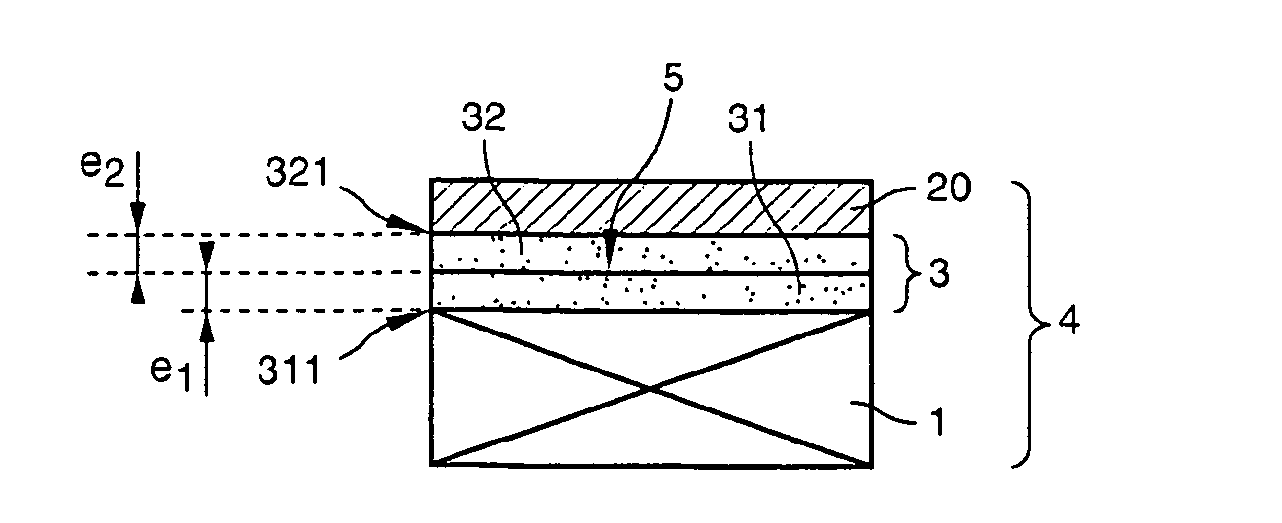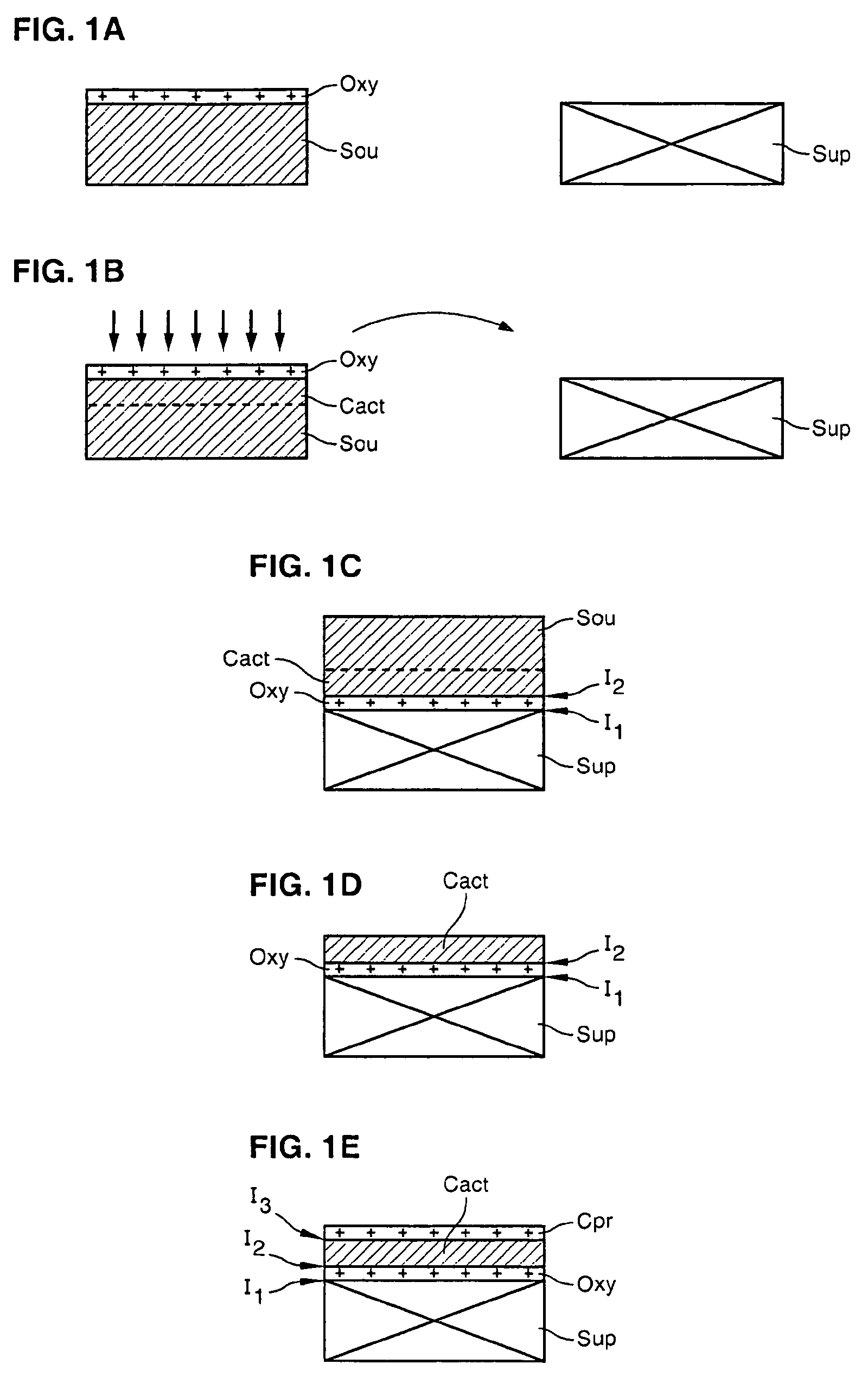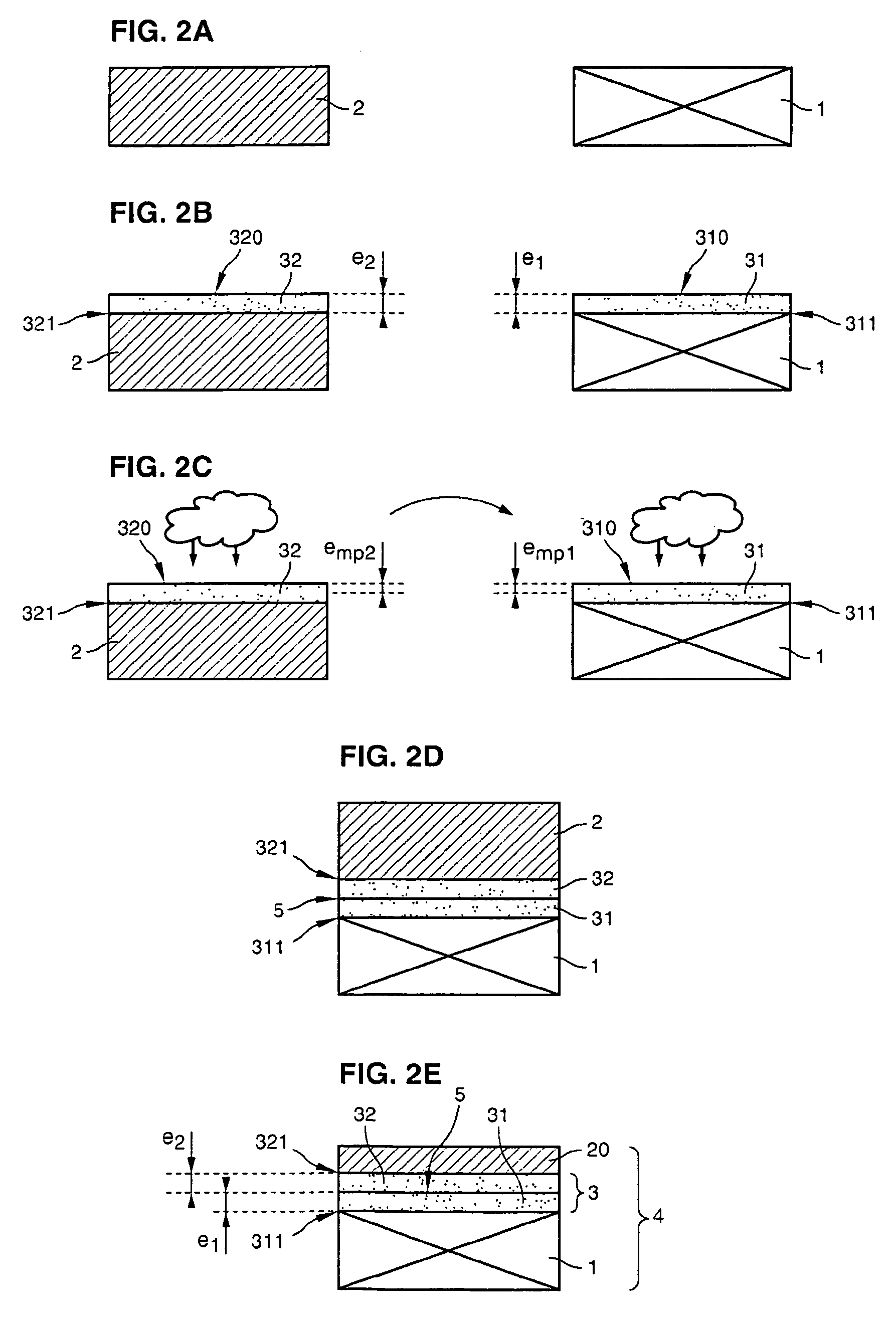Composite substrate and method of fabricating the same
a composite substrate and substrate technology, applied in the direction of basic electric elements, electrical apparatus, semiconductor devices, etc., can solve the problems of difficult production of composite substrates containing a very thin buried insulating layer, fga treatment is relatively ineffective at each interface encountered, and the effect of improving electrical properties
- Summary
- Abstract
- Description
- Claims
- Application Information
AI Technical Summary
Benefits of technology
Problems solved by technology
Method used
Image
Examples
example 1
Preparation of an SOI Type Substrate with an Oxide Laver Thickness of 25 nm
[0116]Thermal oxidation of a 200 mm diameter silicon substrate was carried out to form a 10 nm thick insulating layer of silicon oxide (SiO2) thereon. In a similar manner, a 15 nm thick silicon oxide layer was formed on a silicon source substrate of the same size. Next, the two substrates underwent FGA heat treatment to arrive at the electrical properties of the two oxides.
[0117]The silicon source substrate then underwent a hydrogen ion implantation step, carried out through the silicon oxide layer covering it. Implantation was carried out at a dose of 5.5×1016 H+ / cm2 using an implantation energy of 35 keV.
[0118]Next, the upper surface of the substrate was cleaned with a SC1 solution then with SC2 in succession.
[0119]The silicon oxide layer of the source substrate thus prepared then underwent an oxygen plasma activation treatment applied for 30 seconds at a power density of 0.8 W / cm2, at an oxygen pressure of...
example 2
Preparation of an SOI Type Substrate with an Oxide Thickness of 11 nm
[0127]The procedure of Example 1 was used, respectively with oxide thicknesses of 3 nm on the support substrate and 10 nm on the source substrate. The oxides obtained were then treated at 450° C. for about 1 hour in an atmosphere formed by 2% hydrogen in argon (FGA treatment) to improve the DIT values.
[0128]The source substrate, which comprised the thickest oxide layer, was activated by plasma at a power of 2 W / cm2, resulting in a modification of the oxide over about 7 nm.
[0129]This plasma treated insulating layer was cleaned in a SC1 solution using a concentration, temperature and time sufficient to etch it over a depth of the order of 2 nm. The final composite substrate obtained was an SOI type structure which comprised a buried insulating layer with a thickness on the order of 11 nm and which had good electrical qualities, in particular a DIT of the order of several 1010·eV−1·cm−2.
example 3
Preparation of a GeOI Type Substrate with an Oxide Thickness of 20 nm
[0130]A 5 nm layer of HfO2 was formed on a 200 mm diameter source substrate of bulk germanium. In a variation, the source substrate may consist of a 200 mm silicon wafer on which a layer of germanium has been formed by epitaxy.
[0131]A 15 nm layer of silicon oxide (SiO2) was formed on a silicon (Si) support substrate.
[0132]The silicon oxide layer of the support substrate then underwent an oxygen plasma activation treatment applied for 30 seconds with a power density of 0.4 W / cm2 at an oxygen pressure of 50 mTorr (6.66 Pa), with a flow rate of 75 sccm, at 20° C.
[0133]Bonding was then carried out followed by lifting off the upper portion of the germanium source substrate by detachment using the SmartCut™ method. A GeOI substrate was obtained with a DIT value of the order of several 1011·eV−1·cm−2 at the interface with the germanium and several 1010·eV−1·cm−2 at the interface with the silicon.
[0134]It should be noted t...
PUM
 Login to View More
Login to View More Abstract
Description
Claims
Application Information
 Login to View More
Login to View More - R&D
- Intellectual Property
- Life Sciences
- Materials
- Tech Scout
- Unparalleled Data Quality
- Higher Quality Content
- 60% Fewer Hallucinations
Browse by: Latest US Patents, China's latest patents, Technical Efficacy Thesaurus, Application Domain, Technology Topic, Popular Technical Reports.
© 2025 PatSnap. All rights reserved.Legal|Privacy policy|Modern Slavery Act Transparency Statement|Sitemap|About US| Contact US: help@patsnap.com



